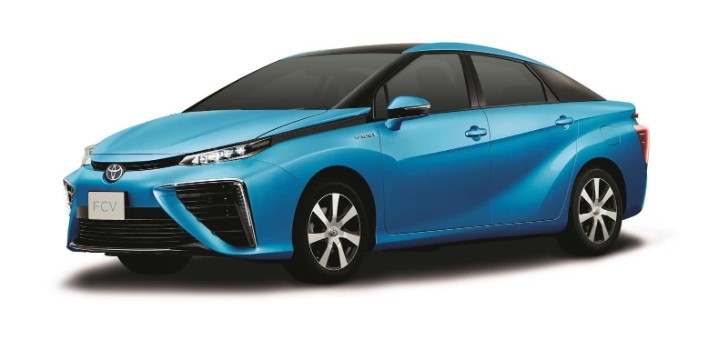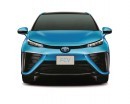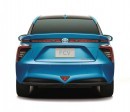Toyota sells more cars than any other brand in the world, and they are often accused of making white goods, household appliances with wheels that blend in too much. While that might be true for a Camry, the exact opposite can be said about the production body of the first hydrogen fuel cell vehicle for the mass market.
Revealed today during a conference in Tokyo, this is what they are going to bring to market some time in 2015. It's pretty safe to say there isn't another car like it on the road, as from just about any angle it has the makings of a concept.
"Subtle" or "natural" are not words that can be used to describe the FCV, but Toyota doesn't want its most revolutionary car yet to go unnoticed.
Like the Prius did back in its day, the FCV is a game-changer in the sense that it achieves what many said couldn't be done. Finally, electric mobility can be combined with a fuel cell that's cheap-enough to be installed in a production car. The planet-saving device is poised to hit Japanese dealerships some time before April 2014 and cost approximately 7 million yen (€50,000 or $69,000).
So what's a hydrogen fuel cell? It's a complete alternative energy solution that turns hydrogen, the most abundant substance in the universe, into water and in the process makes electricity to power the wheels. Filling up the tank takes just 3 minutes, a fraction of the time required for a flat EV battery. When full, the FCV will travel for up to 300 miles (483 km).
Two hurdles still stand in the way of Toyota's green ambitions. One is the fact that some people fuel cell vehicles won’t actually lower carbon emissions that much because the hydrogen extraction is complex. However, the automaker has insisted that hydrogen can be produced using sustainable energy sources such as solar and wind power.
The other problem has to do with hydrogen availability. Fortunately for some American buyers, California has a $200 million (€270 million) grand that will put more filling stations on the map soon.
“In Europe we will be taking it step by step, gradually introducing the car in selected markets. But we are confident that hydrogen will become increasingly popular as a way of powering vehicles," said Karl Schlicht, Executive Vice President Toyota Motor Europe.
"Subtle" or "natural" are not words that can be used to describe the FCV, but Toyota doesn't want its most revolutionary car yet to go unnoticed.
Like the Prius did back in its day, the FCV is a game-changer in the sense that it achieves what many said couldn't be done. Finally, electric mobility can be combined with a fuel cell that's cheap-enough to be installed in a production car. The planet-saving device is poised to hit Japanese dealerships some time before April 2014 and cost approximately 7 million yen (€50,000 or $69,000).
So what's a hydrogen fuel cell? It's a complete alternative energy solution that turns hydrogen, the most abundant substance in the universe, into water and in the process makes electricity to power the wheels. Filling up the tank takes just 3 minutes, a fraction of the time required for a flat EV battery. When full, the FCV will travel for up to 300 miles (483 km).
Two hurdles still stand in the way of Toyota's green ambitions. One is the fact that some people fuel cell vehicles won’t actually lower carbon emissions that much because the hydrogen extraction is complex. However, the automaker has insisted that hydrogen can be produced using sustainable energy sources such as solar and wind power.
The other problem has to do with hydrogen availability. Fortunately for some American buyers, California has a $200 million (€270 million) grand that will put more filling stations on the map soon.
“In Europe we will be taking it step by step, gradually introducing the car in selected markets. But we are confident that hydrogen will become increasingly popular as a way of powering vehicles," said Karl Schlicht, Executive Vice President Toyota Motor Europe.





